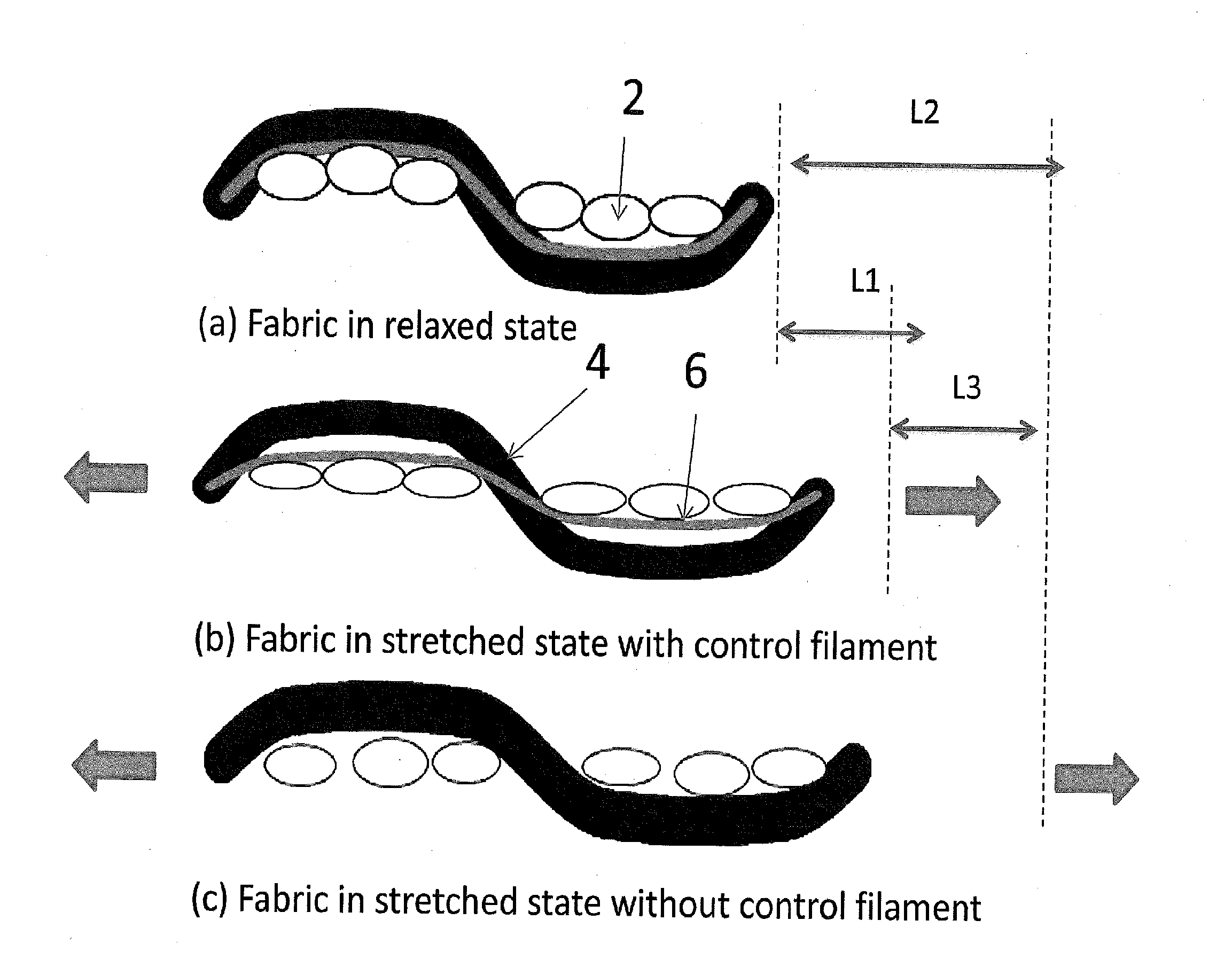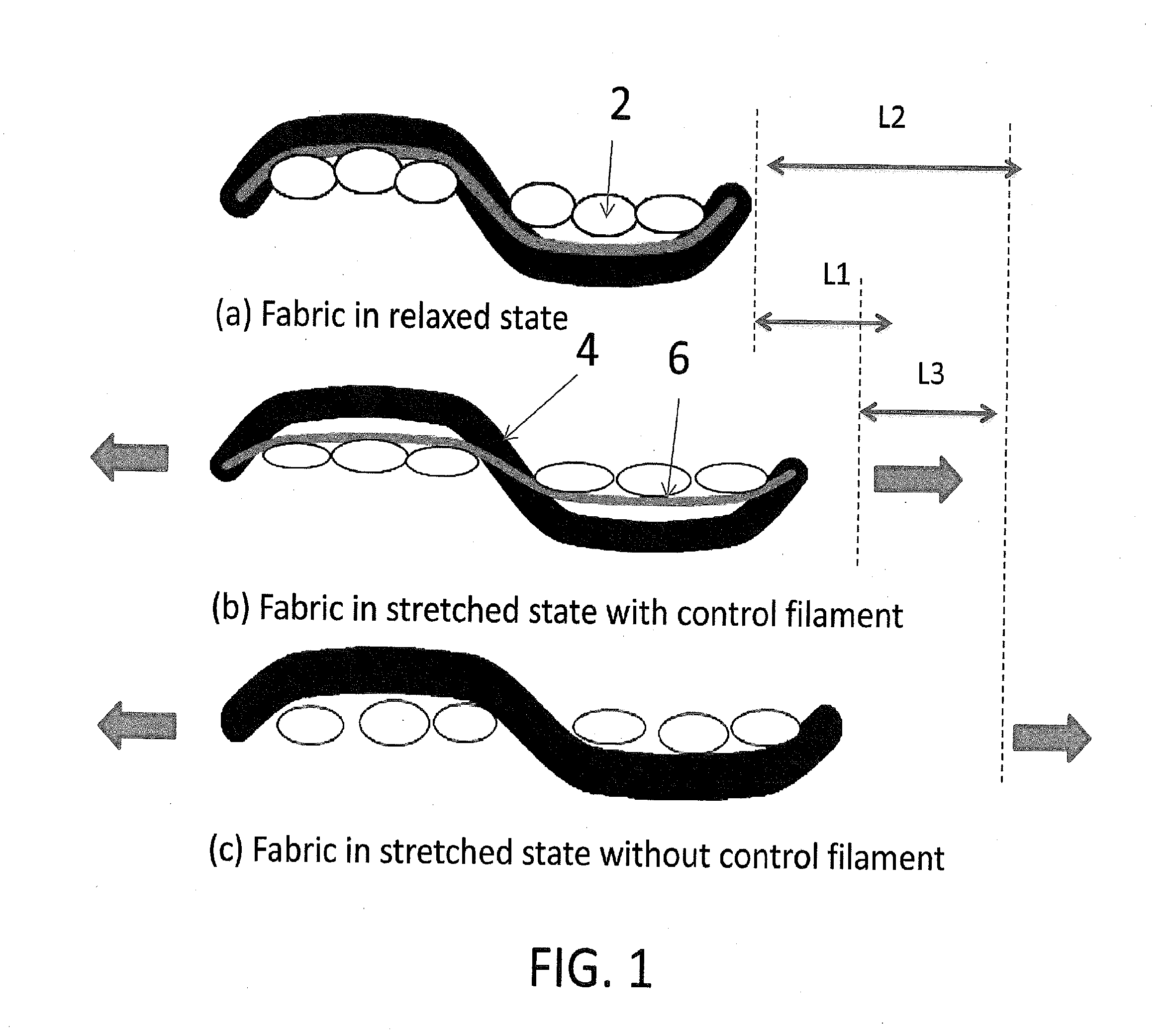Stretch wovens with a control yarn system
- Summary
- Abstract
- Description
- Claims
- Application Information
AI Technical Summary
Benefits of technology
Problems solved by technology
Method used
Image
Examples
example 1c
Typical Stretch Woven Bottom Weight Fabric
[0085]This is a comparison example, not according to the invention. The warp yarn was 40 / 2 Ne count of ring spun yarn. The weft yarn was 20 Ne cotton with 40 D Lycra® core spun yarn. Lycra® draft is 3.5×. This weft yarn was a typical stretch yarn used in typical stretch woven khakis fabrics. Loom speed was 500 picks per minute at a pick level 56 Picks per inch. Table 2 summarizes the test results. The test results show that after finishing, this fabric had weight (g / m2), stretch (%), width (52.3 inch), weft wash shrinkage (%). All these data indicate that this combination of stretch yarns and fabric construction caused high fabric growth.
example 2
Stretch Fabric with Control Yarn in Weft
[0086]This sample had the same fabric structure as in example 1C. The only difference was the use of control yarn in weft: 70 D / 72 f polyester textured filament. The warp yarn was 40 / 2 Ne ring spun cotton. The corespun base yarn in weft was 20 Ne cotton / 40 D Lycra® core spun yarn. The loom speed was 500 picks / minute at 70 picks per inch. Table 2 summarizes the test results. It is clear that this sample had lower fabric growth level.
example 3
Stretch Fabric with Elastic Control Yarn in Weft
[0087]This sample had the same fabric structure as in example 1C. The only difference was the use of control yarn in weft: 40 D / 34 f Nylon / 40 D Lycra® air covered. The warp yarn was 20 Ne 100% cotton ring spun yarn. The weft corespun base yarn was 20 Ne cotton / 40 D Lycra® T162C core spun yarn (drafted to 3.5×). The ratio of corespun base yarn to control yarn in weft is 1:1. Two weft yarns are inserted into fabric during weaving through co-insertion method. Two weft feeders are used with different insertion tensions. 3 / 1 twill weaving pattern was applied for bother corespun base yarn and control yarn. The finished fabric had weight (g / m2), % stretch and % growth in the weft direction. It is clearly shows, control yarn increase the fabrics stretch level while reducing the fabric growth.
PUM
| Property | Measurement | Unit |
|---|---|---|
| Fraction | aaaaa | aaaaa |
| Fraction | aaaaa | aaaaa |
| Fraction | aaaaa | aaaaa |
Abstract
Description
Claims
Application Information
 Login to View More
Login to View More - R&D
- Intellectual Property
- Life Sciences
- Materials
- Tech Scout
- Unparalleled Data Quality
- Higher Quality Content
- 60% Fewer Hallucinations
Browse by: Latest US Patents, China's latest patents, Technical Efficacy Thesaurus, Application Domain, Technology Topic, Popular Technical Reports.
© 2025 PatSnap. All rights reserved.Legal|Privacy policy|Modern Slavery Act Transparency Statement|Sitemap|About US| Contact US: help@patsnap.com


